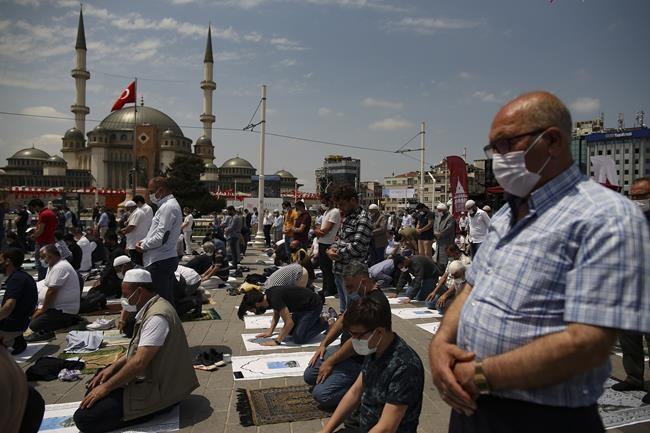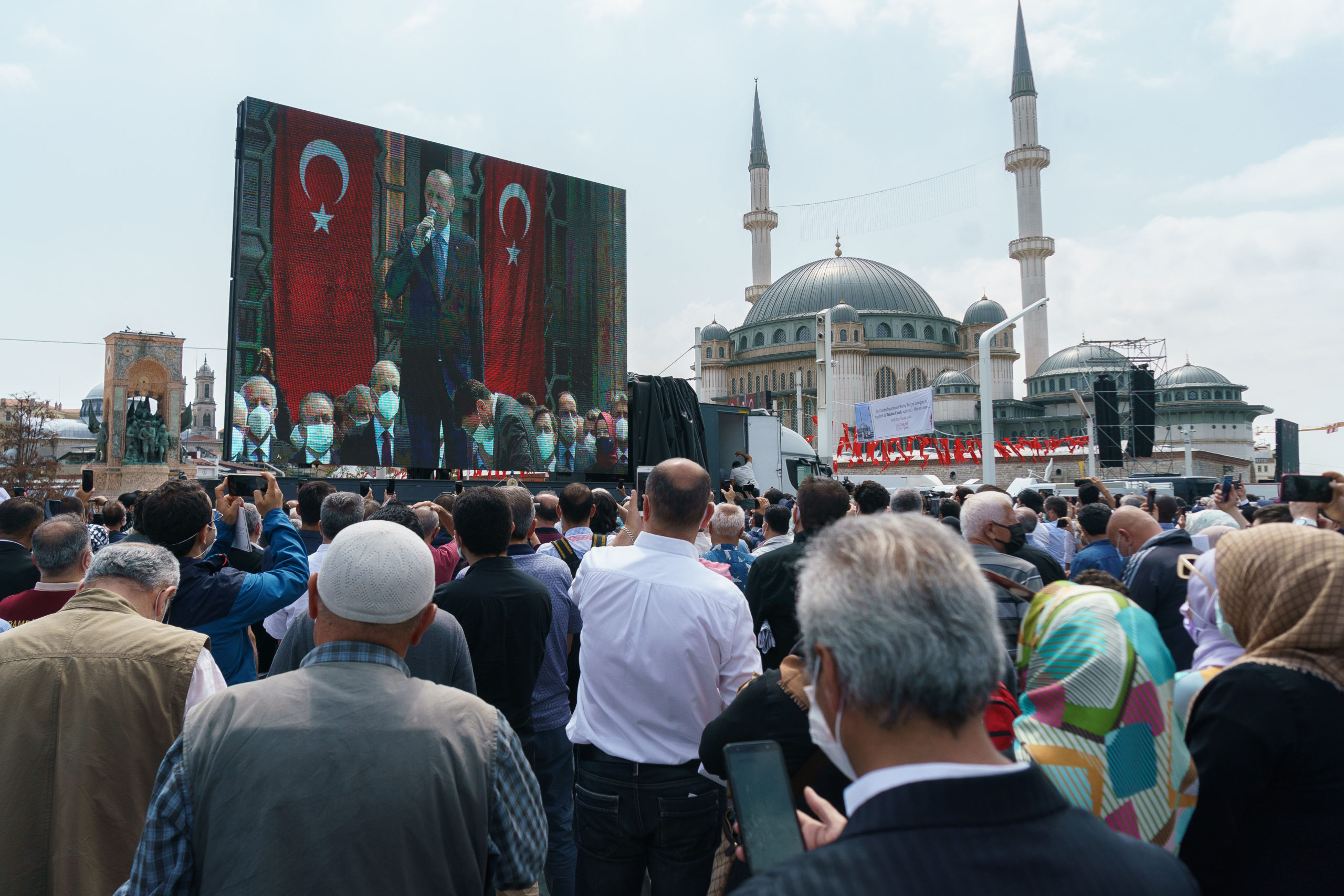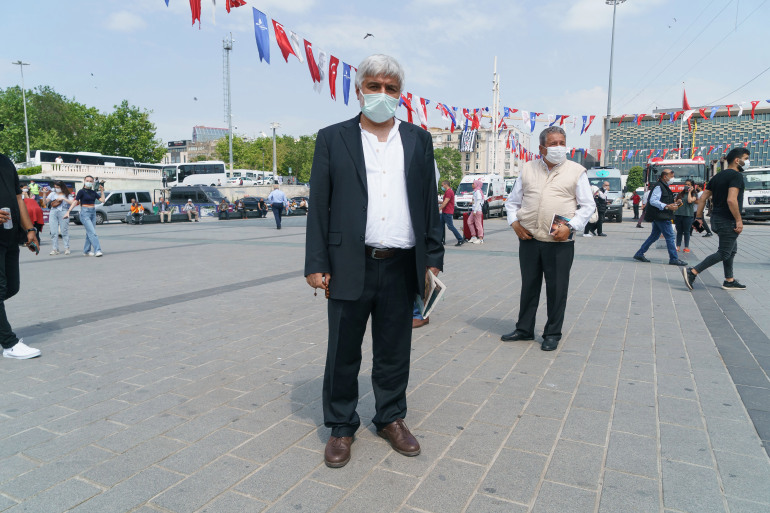
Erdogan opens landmark mosque in Istanbul’s Taksim Square
The opening attended by thousands coincided with the anniversary of massive anti-government protests, which began at nearby Gezi Park in 2013.
Istanbul, Turkey – Thousands of worshippers turned out in Istanbul’s central Taksim Square on Friday to mark the inauguration by President Recep Tayyip Erdogan of an imposing, and controversial, new mosque.
The opening fulfilled a long-held ambition by various governments since the 1950s to build a Muslim place of worship in the square, often thought of as a symbol of Turkey’s founding father Mustafa Kemal Ataturk’s secularism.
The inauguration also coincided with the anniversary of massive anti-government protests, which began in the nearby Gezi Park on May 28, 2013, due to government construction plans.
Screens in the square showed the first prayers at the mosque, which looms over a bronze and marble statue depicting Ataturk, while worshippers sat on disposable paper prayer mats.
While municipality workers handed out masks and sanitiser, the was little social distancing among the thronging crowds – even though Turkey has recently come out of its strictest COVID-19 lockdown yet.
Erdogan’s arrival was met with applause as he waved to the crowd before heading inside.


“We have been waiting a long, long time for this mosque,” Mehmet Ali Karahacioglu, 68, told Al Jazeera.
“No one was able to do it – only Erdogan. He’s a special man for me. Taksim Square has a very beautiful view right now – I wish they could have built this mosque 50 years ago,” he said.
In a speech, Erdogan said he hoped it would “illuminate our city like an oil lamp for centuries to come”.


Taksim is the focal point of life on the European side of Istanbul – it connects with the main shopping street, Istiklal, and typically buzzes with shoppers, tourists, workers and partygoers.
The area was home to Istanbul’s religious and ethnic minorities during the Ottoman era and there are several churches in the vicinity, including the city’s largest Greek Orthodox church, but few large mosques.
“We did not have enough mosques around here, so this is good,” said Canan Kurtoglu, 53, who attended the prayers and works for the subcontractor who built the mosque’s doors.
For critics, however, the new landmark’s 28-metre-wide dome and two towering minarets loom over the square as an effort by Erdogan, whose ruling Justice and Development (AK) Party has been in power since 2002, to impose a religious and conservative dominance over the area.
Soner Cagaptay, director of the Turkish research programme at the Washington Institute for Near East Policy, said on Twitter that by “patronizing large, symbolic mosques in the city of his birth … Erdogan appears determined to leave his indelible mark on Turkey”.
Gezi Park protests
Erdogan pushed for the establishment of a mosque in the area since he was Istanbul mayor in the 1990s, however, the plans were frustrated by a military intervention in 1997 that deposed the country’s Islamist government, and by a series of legal and public battles.
During a speech that followed the inaugural prayers, Erdogan blamed the Gezi protests for the mosque project not having come to fruition earlier, referring to it as a “moment when those terrorists stood against us”.
The Gezi protests were sparked by Erdogan’s plan to build a shopping mall designed like the Ottoman-era barracks on a rare green space in the area, but a heavy-handed police response saw it spread around the country in unrest that continued for months.
Construction on the mosque eventually began in 2017. The new 2,250-capacity mosque reportedly also contains an exhibition hall, library, soup kitchen and car park.
It is the third major religious landmark to be established in the city recently by Erdogan.
The enormous Camlica mosque overlooking the Asian side of the city was opened in March 2019.
The 1,400-year-old Hagia Sophia, which was originally a church before becoming a mosque under the Ottomans and then a museum under Ataturk, was reconverted into a mosque last year.


Across the other side of the square from the mosque was the Ataturk Cultural Centre, a 1960s building that Gezi protesters hung with banners in 2013 but was demolished in 2019.
The building is now being replaced by a new Ataturk Cultural Centre that will hold an opera house, as well as exhibition halls, cafes and restaurants.
“Erdogan has just made this mosque for political reasons,” said Can Aksoy, 40, an actor who grew up and lives in the area.
“He built it right in front of the cultural centre, just to show his power because he can.”



